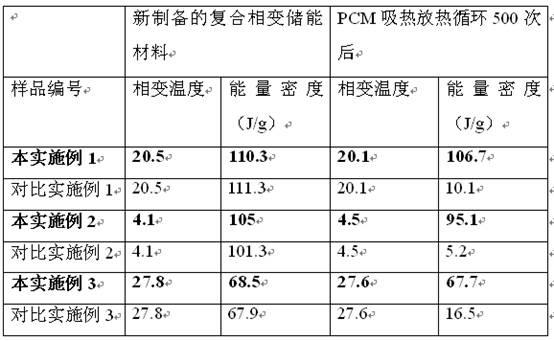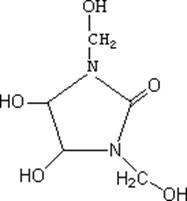Compound polyethylene glycol phase change material
A phase-change energy storage material, polyethylene glycol technology, applied in the direction of heat exchange materials, chemical instruments and methods, etc., to achieve the effects of no special smell, long service life and good compatibility
- Summary
- Abstract
- Description
- Claims
- Application Information
AI Technical Summary
Problems solved by technology
Method used
Image
Examples
Embodiment 1
[0021] Add 160 kg of expanded perlite powder (particle size 0.15.mm-1.18mm) and about 500 kg of PEG 600 into a 3 cubic meter vacuum reactor at room temperature, and then stir at a speed of about 80r / min. After 10 minutes, vacuumize the reactor to about 10kPa with a water ring vacuum pump, close the exhaust valve, and keep stirring under vacuum for 40 minutes. Close the exhaust valve, open the vent valve, let the air enter the reactor, and keep it for 20 minutes, so that the PEG on the surface of the expanded perlite will enter its micropores under the action of the air pressure difference, and the unadsorbed PEG 600 will be filtered out. Then add 1000 kg of 10% dimethylol dihydroxy ethylene urea and 3% MgCl in the reactor 2 / citric acid mixed catalyst aqueous solution, through the jacket of the reactor, the temperature is slowly raised to 60°C and kept for 15 minutes for cross-linking reaction, kept at 90°C for 8 minutes, after cooling, the surface of the expanded perlite is ...
Embodiment 2
[0025] Add 300 kg of diatomaceous earth (325 mesh) and about 500 kg of PEG 400 into a 3 cubic meter vacuum reactor at room temperature, and then stir at a speed of about 80r / min. After 10 minutes, vacuumize the reactor to about 10kPa with a water ring vacuum pump, close the exhaust valve, and keep stirring under vacuum for 40 minutes. Close the exhaust valve, open the vent valve, let the air enter the reactor, and keep it for 20 minutes, so that the PEG on the surface of the diatomite will enter its micropores under the action of the air pressure difference, and filter out the unadsorbed PEG 600. Then add 1000 kg of 10% dimethylol dihydroxy ethylene urea and 3% MgCl in the reactor 2 / citric acid mixed catalyst aqueous solution, through the jacket of the reactor, the temperature is slowly raised to 60°C and kept for 15 minutes for cross-linking reaction, kept at 90°C for 8 minutes, after cooling, the surface of the diatomite obtained is covered with dimethyloldihydroxyethylene ...
Embodiment 3
[0029] Add 700 kg of zeolite powder (100 mesh) to a 3 cubic meter vacuum reactor at room temperature. Then, the reactor was heated to 40°C with a jacket. About 700 kg of PEG 800, after heating to its melting point, is added into the reaction kettle, and stirred and mixed evenly at a speed of about 80r / min. After 10 minutes, vacuumize the reactor to about 10kPa with a water ring vacuum pump, close the exhaust valve, and keep stirring under vacuum for 40 minutes. Close the exhaust valve, open the vent valve, let the air enter the reactor, and keep it for 20 minutes, so that the PEG on the surface of the zeolite will enter its micropores under the action of the air pressure difference, and the unadsorbed PEG 600 will be filtered out. Then add 1000 kg of 10% dimethylol dihydroxy ethylene urea and 3% MgCl in the reactor 2 / citric acid mixed catalyst aqueous solution, through the jacket of the reactor, slowly raise the temperature to 60°C and keep it for 15 minutes for crosslinkin...
PUM
| Property | Measurement | Unit |
|---|---|---|
| Particle size | aaaaa | aaaaa |
Abstract
Description
Claims
Application Information
 Login to View More
Login to View More - R&D
- Intellectual Property
- Life Sciences
- Materials
- Tech Scout
- Unparalleled Data Quality
- Higher Quality Content
- 60% Fewer Hallucinations
Browse by: Latest US Patents, China's latest patents, Technical Efficacy Thesaurus, Application Domain, Technology Topic, Popular Technical Reports.
© 2025 PatSnap. All rights reserved.Legal|Privacy policy|Modern Slavery Act Transparency Statement|Sitemap|About US| Contact US: help@patsnap.com


